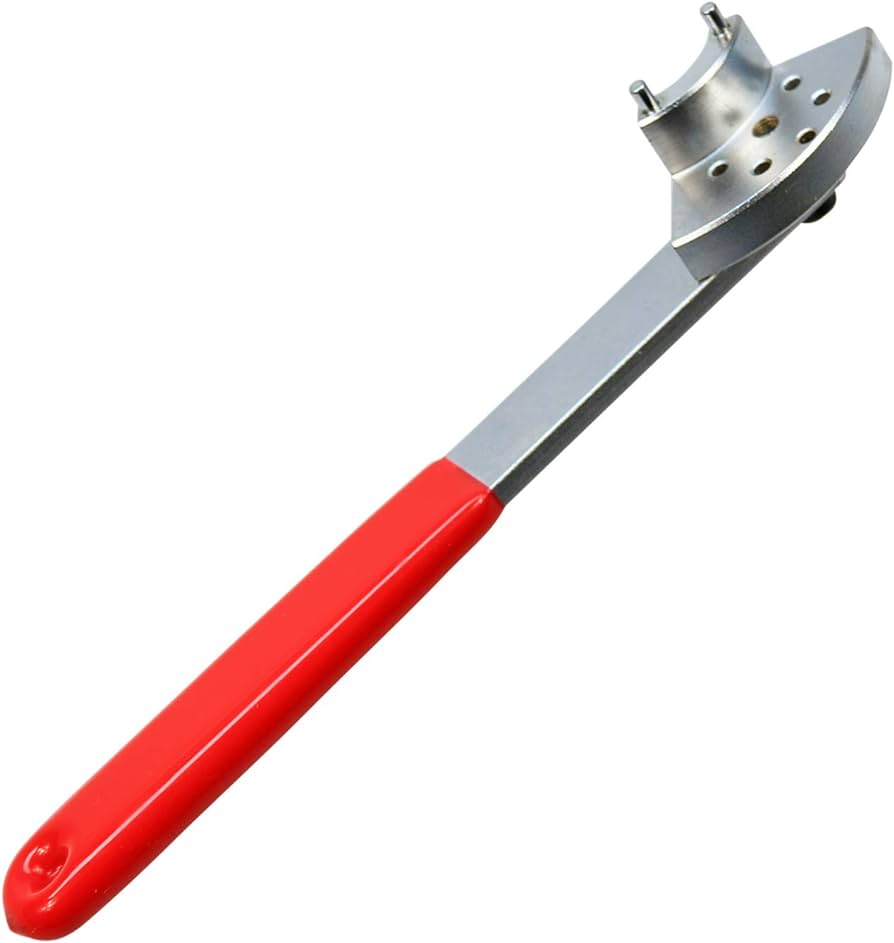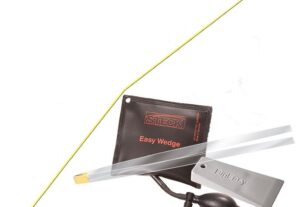If you’re a car enthusiast or a professional mechanic, you know that engine maintenance is crucial to the overall performance and longevity of your vehicle. One of the essential tools in your toolbox should be the timing belt tensioner tool.
This tool ensures proper alignment and tensioning of the timing belt, which controls the rotation of the camshaft and crankshaft, allowing your engine to run smoothly. In this article, we’ll discuss everything you need to know about timing belt tensioner tools – from what they are, how they work, and why you need them.
Understanding Timing Belt Tensioners
Before we dive into the details of timing belt tensioner tools, let’s first understand what timing belt tensioners are and their function in an engine.
A timing belt is a rubber-based component that connects the camshaft to the crankshaft, controlling the opening and closing of engine valves. It’s imperative to keep this component at optimal tension levels to prevent damage to your engine.
A timing belt tensioner is responsible for maintaining constant pressure on the timing belt, ensuring it remains tight without over-tightening. It works by using a spring-loaded mechanism that applies force on the timing belt while compensating for its natural stretching over time.
Why Do You Need a Timing Belt Tensioner Tool?
As mentioned earlier, a timing belt tensioner tool is crucial for maintaining proper engine performance. Here are some reasons why having one in your toolbox is necessary:
1. Saves Time and Money
Using a timing belt tensioner tool saves time and money by making sure that the timing belt is correctly aligned and tensioned. If not, misalignment can lead to costly repairs such as bent valves or damaged pistons.
2. Helps Prevent Engine Damage
A properly aligned and tensioned timing belt reduces wear on other engine components such as water pumps and idler pulleys, preventing premature failure and costly repairs.
3. Increases Engine Performance
A properly tensioned timing belt ensures that the engine runs smoothly, increasing performance and fuel efficiency.
Types of Timing Belt Tensioner Tools
There are two main types of tensioner tools – manual and hydraulic.
Manual Tensioner Tools: Manual tensioner tools apply pressure to the timing belt using a screw or ratchet mechanism, allowing you to adjust the tension manually. This type of tool is ideal for vehicles with a simple design.
Hydraulic Tensioner Tools: Hydraulic tensioner tools use fluid pressure to automatically adjust the timing belt’s tension, making them suitable for more complex engines with multiple belts or chains.
How to Use a Timing Belt Tensioner Tool?
Using a timing belt tensioner tool requires some basic knowledge and skills. Here’s how to use it:
1. Identify the Timing Belt Tensioner
Locate the timing belt tensioner in your engine bay. It’s usually located near the crankshaft pulley or water pump.
2. Remove the Old Belt
Remove the old timing belt from your engine by loosening any bolts or clamps holding it in place.
3. Apply Tension on Your New Belt
Use your timing belt tensioner tool to apply proper tension on your new timing belt. Refer to your car’s manual for specific torque settings.
4. Check Alignment
Ensure that the timing marks on your camshaft and crankshaft align correctly before reinstalling other engine components.
Conclusion
In conclusion, adding a timing belt tensioner tool to your toolbox is essential for maintaining optimal engine performance and longevity. Whether you’re a professional mechanic or an avid car enthusiast, investing in this tool will save you time and money in costly repairs down the road.
If you’re unsure about how to use a timing belt tensioner tool or have any questions about engine maintenance, don’t hesitate to ask a professional for help. Happy wrenching!
References:
1. https://www.autozone.com/diy/engine/timing-belt-tensioner-tool
2. https://www.carcareportal.com/how-to-use-a-timing-belt-tensioner-tool/
3. https://en.wikipedia.org/wiki/Timing_belt#Tensioning
4. https://www.popularmechanics.com/cars/a20733/how-to-replace-a-timing-belt/




